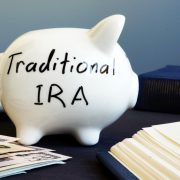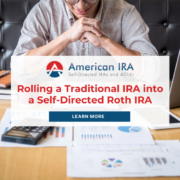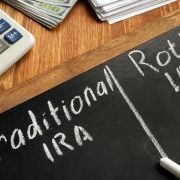Who is Eligible for a Self-Directed Traditional IRA?
Ask around about retirement accounts and you’ll learn that the oldest in the United States is the Traditional IRA. In fact, it used to be known simply as an IRA, but times have changed so much and so many new accounts have been added that many people refer to it as the “Traditional IRA.” And while many people use Roth IRAs, it’s important to recognize that there is still a place for the Traditional IRA. To that end, it’s important to answer another important question: who is eligible for a Self-Directed Traditional IRA, and what are the contribution limits within one if you are eligible?
Eligibility with a Self-Directed Traditional IRA
All you need to get started is an earned income, then you can begin making contributions to a Self-Directed Traditional IRA. However, there are some basic rules that you’ll want to know:
- “Almost anyone” can contribute to a Traditional IRA, according to CNN Money, provided that you or your spouse receive taxable income and remain under the age of 70 ½. This means that the first eligibility requirement is that you do earn some sort of money—and remember that “earned income” can be different from simply receiving money. This typically means that Traditional IRAs work for people who are either employed by a company or self-employed.
- You can contribute up to $6,000 if you are 49 or younger in a Traditional IRA in 2021. There are additional catch-up provisions possible once you reach the age of 50 or older, which means that your contribution limits do change depending on your overall circumstances.
Additionally, you might have noted that “you or your spouse” was a key phrase above. What does that mean? Well, if you have a non-working spouse amongst the two of you, it may be possible for the working spouse to put some of their earned income toward your Self-Directed Traditional IRA. This is why you don’t always need personal earned income for a Traditional IRA, because there are some unique exceptions allowed.
Getting Started with a Self-Directed Traditional IRA
Once you have earned income and check the appropriate age framework, you’re free to establish a Traditional IRA. For self-direction, many people work with a Self-Directed IRA administration firm to get started. What does that mean? A Self-Directed IRA administration firm can help with the paperwork, establishing itself as the custodian on the account.
Why would you need a custodian? If you’re directing your own Traditional IRA, it will give you easy access to make investments as you see fit, which includes a wide variety of potential retirement assets like real estate. Working through the custodian, who will carry out the transactions that you place, you can then grow a retirement account using a wider variety of potential investment avenues. This also gives you the option of controlling more in your own retirement account, rather than working from a variety of pre-selected assets.
In other words, self-directing gives you the option to take control over your financial future, particularly as it relates to your retirement accounts. However, it also means that there is more responsibility on your part to understand what this means. For example, you’ll need to know a more about the investments in which you place your retirement money—after all, you’re the key individual here. You can always seek out financial advisors but remember that a Self-Directed IRA custodian is not an advisor; they simply carry out the transactions on the IRA’s behalf.
Interested in learning more about Self-Directed IRAs? Contact American IRA, LLC at 866-7500-IRA (472) for a free consultation. Download our free guides or visit us online at www.AmericanIRA.com.










